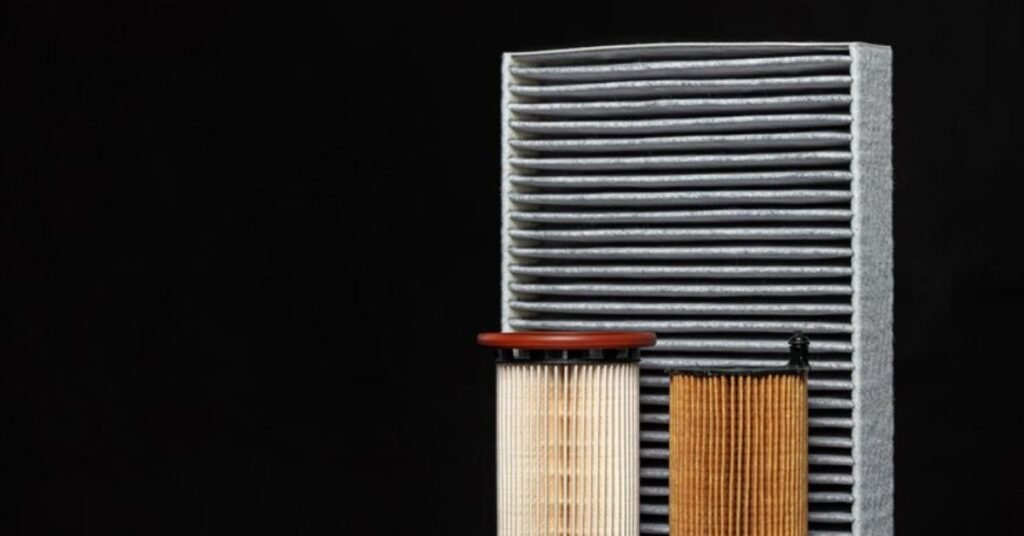Introduction
Air filters are critical for maintaining air quality in various settings, from homes to industrial environments. One such high-performance option is the Saf-Naa00 air filter, which has gained attention for its efficiency in removing contaminants and ensuring cleaner air. Clean air is not just a preference but a necessity for respiratory health and operational efficiency in many industries.
In this guide, we will explore everything you need to know about the filtration system, including its design, key benefits, applications, and challenges. By understanding its features and uses, you’ll discover how this air filter can contribute to better air quality and improved performance in different environments.
What is the Saf-Naa00 Air Filter?
The Saf-Naa00 air filter is an advanced filtration system designed to eliminate airborne contaminants and particles from the air. It is widely used in residential, commercial, and industrial settings to ensure a cleaner, safer environment. By removing particulates such as dust, pollen, bacteria, and harmful chemicals, the Saf-Naa00 helps maintain high air quality, which is essential for health and the proper functioning of equipment.
Key Features of the Saf-Naa00 Air Filter:
- Multi-stage filtration system: Designed to trap particles of varying sizes, from larger dust particles to microscopic pollutants.
- High-efficiency particulate air (HEPA) filter technology: Capable of capturing 99.97% of particles as small as 0.3 microns.
- Durable and long-lasting construction: Built to last in harsh environments, reducing the need for frequent replacements.
- Energy efficiency: Helps maintain optimal airflow in HVAC systems, reducing energy consumption and operational costs.
Detailed Explanation of Key Concepts
To fully appreciate the capabilities of the filtration system, it’s important to understand how air filtration works and what sets this filter apart.
1. How Air Filtration Works
Air filters are designed to capture and remove particles from the air. These particles can range from large debris like dust and hair to microscopic contaminants such as mold spores, bacteria, and viruses. The effectiveness of an air filter depends on its ability to capture particles of various sizes while maintaining efficient airflow.
2. HEPA Filtration
HEPA filters, such as those used in the Saf-Naa00, meet strict efficiency standards, removing 99.97% of particles down to 0.3 microns. This level of filtration is crucial in settings where maintaining air purity is essential, such as in hospitals, laboratories, and homes with allergy sufferers.
3. Activated Carbon Filtration
In addition to HEPA filtration, the filtration system often includes activated carbon layers, which help neutralize odors and capture volatile organic compounds (VOCs) and other harmful gases. This multi-layer approach ensures a comprehensive filtration process.
4. Electrostatic Filtration
Some filtration system employ electrostatic filtration, where the filter fibers are charged with static electricity to attract and capture airborne particles. This method enhances the filter’s efficiency in trapping fine particles.
5. Pre-filters
Many Saf-Naa00 models include pre-filters that capture larger particles like dust and pet dander. This prevents the main filter from becoming clogged and extends its life.
Importance and Benefits of the Saf-Naa00 Air Filter
1. Improved Air Quality
The primary benefit of the Saf-Naa00 air filter is its ability to significantly improve indoor air quality. It captures pollutants such as dust, pollen, mold, bacteria, and even airborne viruses, ensuring cleaner air for breathing.
2. Health Benefits
By reducing the presence of allergens and pollutants in the air, the filtration system can help alleviate respiratory problems such as asthma, allergies, and other respiratory conditions. Clean air reduces the risk of illness and improves overall well-being.
3. Energy Efficiency
A clean air filter improves the efficiency of HVAC systems by ensuring proper airflow. This reduces the strain on the system, leading to lower energy consumption and reduced operating costs over time. The Saf-Naa00 is designed to optimize airflow while still capturing harmful particles.
4. Cost-Effective in the Long Run
Though the Saf-Naa00 may have a higher upfront cost compared to basic filters, its durability and high filtration efficiency make it a cost-effective choice in the long run. You’ll save on replacement costs and maintenance by opting for a high-performance filter.
5. Compliance with Air Quality Standards
The Saf-Naa00 meets or exceeds various air quality and safety standards, including HEPA certification. This makes it a reliable choice for environments where air purity is legally required, such as medical facilities and industrial plants.
6. Reduced Odors and VOCs
The activated carbon layer in the filtration system effectively removes unpleasant odors and harmful gases. This is particularly useful in environments exposed to chemicals or pollutants, such as laboratories, industrial plants, and commercial kitchens.
Applications and Use Cases of the Saf-Naa00 Air Filter
The versatility of the Saf-Naa00 air filter allows it to be used in a wide range of environments. Below are some of the most common applications.
1. Residential Use
In homes, the The activated carbon layer in the filtration system effectively removes unpleasant odors and harmful gases. This is particularly useful in environments exposed to chemicals or pollutants, such as laboratories, industrial plants, and commercial kitchens.
is commonly installed in HVAC systems to ensure that the air circulating inside the house is free from dust, pollen, pet dander, and other allergens. It is particularly beneficial for homes with individuals who suffer from allergies or asthma.
2. Commercial Buildings
In commercial spaces like offices, schools, and retail stores, maintaining air quality is crucial to the comfort and health of occupants. The Saf-Naa00 filter helps reduce airborne contaminants, improving indoor air quality for employees and visitors.
3. Industrial Settings
Factories and industrial plants often deal with high levels of airborne contaminants, including dust, smoke, and harmful chemicals. The filtration system is used in industrial air filtration systems to capture these pollutants and prevent them from affecting the health of workers and the operation of equipment.
4. Healthcare Facilities
Hospitals, clinics, and laboratories require stringent air filtration to prevent the spread of infections and ensure a sterile environment. The Saf-Naa00 air filter, with its HEPA capabilities, is often used in these settings to filter out bacteria, viruses, and other airborne pathogens.
5. Automotive Applications
In cars, especially in highly polluted urban areas, cabin air filters are essential for maintaining a clean and healthy environment for passengers. The Saf-Naa00 air filter can be used in automotive HVAC systems to trap dust, pollen, and pollution, ensuring that the air inside the vehicle is clean.
6. Food and Beverage Processing
Airborne contaminants can compromise the safety and quality of food products during processing. The filtration system is used in food processing plants to filter the air, preventing contamination and ensuring compliance with health and safety regulations.
7. Public Spaces
Air quality in crowded public spaces such as airports, shopping malls, and theaters is critical. The Saf-Naa00 filter helps reduce the spread of airborne contaminants in these areas, contributing to better public health.
Challenges and Solutions of the Saf-Naa00 Air Filter
While the Saf-Naa00 air filter offers numerous benefits, there are some challenges users may encounter. Below are common issues and solutions.
1. Maintenance Requirements
Over time, air filters accumulate dust and debris, which can reduce their efficiency. Regular maintenance, including cleaning or replacing the filter as recommended, is essential for maintaining peak performance. The Saf-Naa00 filter typically requires less frequent replacements due to its durability but should still be monitored regularly.
2. Initial Cost
The filtration system may have a higher upfront cost compared to standard filters. However, its extended lifespan and efficiency in removing harmful particles make it a cost-effective investment over time. Users can offset the initial cost by saving on frequent replacements and energy bills due to improved airflow.
3. Compatibility with Older Systems
In some cases, older HVAC systems may not be compatible with newer, more advanced air filters like the Saf-Naa00. Before purchasing, it’s important to check the specifications of your HVAC system to ensure compatibility. If necessary, modifications can be made to accommodate the Saf-Naa00 filter.
4. Performance in Extreme Conditions
In areas with high humidity or extremely dusty conditions, the filter may become clogged more quickly, reducing its effectiveness. To address this issue, consider using a pre-filter or implementing a more frequent maintenance schedule to prevent clogging.
5. Odor Control in Certain Environments
While the activated carbon layer is effective at removing odors, it may not fully neutralize strong or persistent smells in certain environments. In these cases, an additional odor control system may be required in conjunction with the Saf-Naa00 air filter.

How to Choose the Right Saf-Naa00 Air Filter
Choosing the right filtration system for your specific needs involves considering several factors:
1. Type of Contaminants
Different environments have different air quality concerns. For example, in a healthcare setting, the filter needs to remove pathogens, while in an industrial environment, dust and chemicals may be the primary concern. Choose a filter with the appropriate capabilities for your environment.
2. Filter Size
Ensure that the filter is the correct size for your HVAC system or air purifier. Installing an incorrectly sized filter can reduce its efficiency and lead to air bypass, where contaminants escape filtration.
3. Filter Lifespan
Consider how often the filter will need to be replaced. The filtration system is designed for longevity, but the replacement schedule may vary based on environmental factors and usage.
4. Budget
While the Saf-Naa00 may have a higher price point, its long-term benefits often justify the cost. Consider the savings you’ll achieve from reduced energy consumption and fewer filter replacements.
5. Airflow Requirements
For environments that rely heavily on HVAC systems, airflow efficiency is critical. Make sure the filter you choose is optimized for airflow to maintain system performance while still effectively filtering contaminants.
Conclusion
The Saf-Naa00 air filter offers a powerful and reliable solution for improving air quality in various environments. From homes and offices to industrial plants and healthcare facilities, its advanced filtration capabilities help capture harmful contaminants and ensure cleaner, safer air. Whether you’re dealing with dust, allergens, VOCs, or pathogens, the Saf-Naa00 provides a robust defense against airborne pollutants.
By investing in the filtration system, you can protect the health of occupants, extend the life of your HVAC system, and contribute to a healthier environment. With proper maintenance and use, the Saf-Naa00 air filter can provide long-term benefits and improve air quality in even the most challenging conditions.
FAQs
1. How often should the Saf-Naa00 air filter be replaced?
The filter should be replaced every 6 to 12 months, depending on environmental conditions and usage.
2. Can the Saf-Naa00 air filter remove allergens like pollen and pet dander?
Yes, the Saf-Naa00 filter is highly effective at removing allergens, including pollen, pet dander, and dust mites.
3. Is the Saf-Naa00 air filter suitable for use in industrial environments?
Absolutely. The Saf-Naa00 is designed to handle the heavy filtration demands of industrial settings, including dust, smoke, and chemicals.
4. Can the Saf-Naa00 filter be used in a residential HVAC system?
Yes, the Saf-Naa00 air filter can be installed in residential HVAC systems to improve indoor air quality and remove common household contaminants.
5. Does the Saf-Naa00 air filter reduce odors?
The activated carbon layer helps neutralize odors and VOCs, although it may require additional odor control for particularly strong smells.



